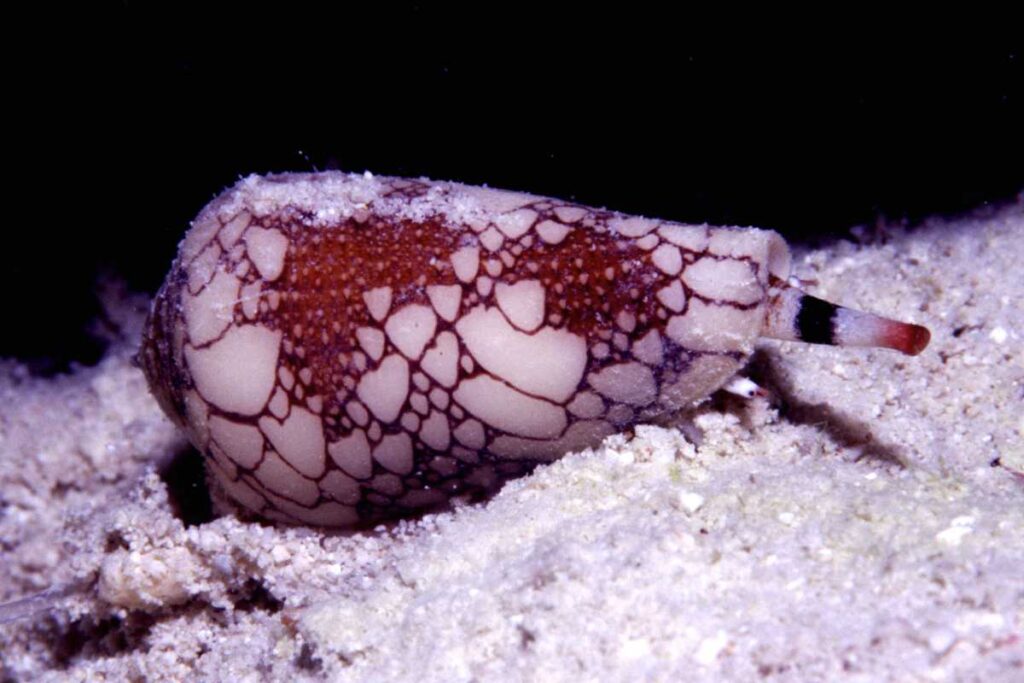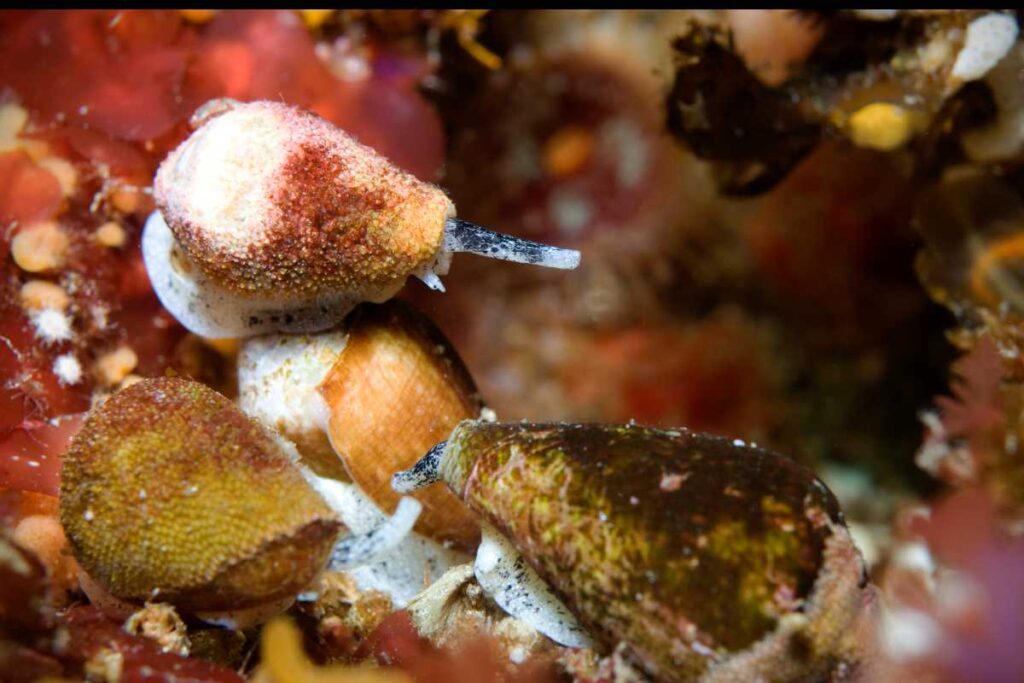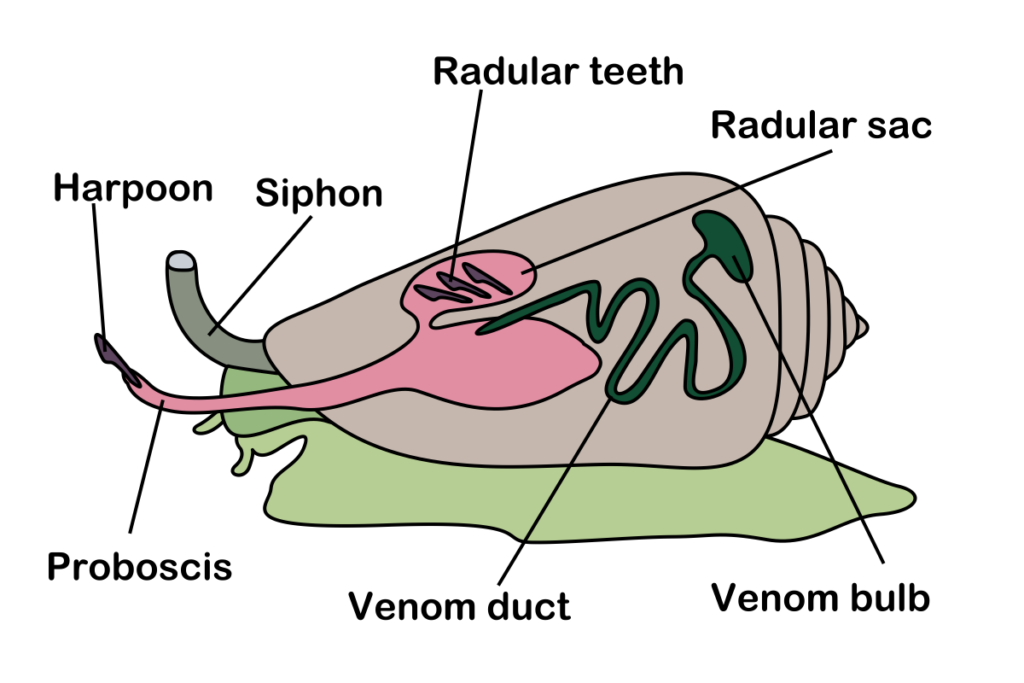Last Reviewed and Updated on February 4, 2023
When it comes to shells, cone shells have some of the most colorful and beautifully patterned shells of all mollusks. Picking them up on the beach might not be the best idea, though, as these snails pack a punch. Ready to learn more? Read through these facts about cone snails; we are sure some will shock you.

About Cone Snails
Cone snails are sea snails that belong to the Conidae family. They are mostly found in warm tropical seas and oceans around the globe, with most species being found in the Western Indo-Pacific region.
There are over 900 species of cone snails, with more than ten new species being discovered yearly.
As their name suggests, cone snails have cone-shaped shells. The color and pattern on the shell vary between species, from dull colors and no pattern at all to complex geometrical patterns.
These snails are carnivorous (they eat meat) and prey on mollusks, worms, fish, and other animals.
While some species of cone snails are considered threatened for various reasons, cone snails are widely distributed and numerous.
Interesting Facts About Cone Snails
You got through the basics about this intriguing species; now it’s time to learn some of the shocking facts about cone snails.

1. All cone snails are venomous
All species of cone snails are venomous. Most aren’t dangerous to humans, though, as their stings are roughly equal to the sting of bees. However, a few of the species can deliver very painful stings, and some stings can even be fatal.
2. They shot venomous harpoons
Cone snails deliver their venom by shooting a “harpoon” at their prey (or in self-defense). They use a radula tooth as a harpoon-like structure; the harpoon is a modified tooth.
These modified teeth are made of chitin, formed inside the snail’s mouth, and stored in the radula sac until needed. The “harpoons” are hollow and barbed.
Once cone snails detect their prey, they direct their proboscis (elongated appendage from the head of an animal) toward their prey and shoot their harpoon tooth (attached to the tip of the radula) at it.

3. Geography cone snail is the deadliest snail in the world
Some larger, fish-eating come snails are extremely dangerous, and their stings can be fatal. A few of these are Geography cone snail (Conus geographus), Tulip cone (Conus tulipa), and Striated cone (Conus striatus).
Geography cone snail is believed to be the most venomous and most dangerous of all cone snails and all gastropods (it holds the Guinness World Record). Its venom is a complex mix of hundreds of different toxins. Even worse, there is no anti-venom for a cone snail sting, so the treatment is to keep the sting victims alive until the toxins wear off.
4. Larger species can grow up to 10.2 inches / 26 centimeters in length
Many larger species can grow up to about 9.1 inches / 23 centimeters in length.
The butterfly cone (Conus pulcher) can grow to 10.2 inches / 26 centimeters in length and is the largest of cone snails.
5. They have no issues with preying on other cone snails
Amongst other things, cone snails also eat other cone snails.
6. After feeding, they regurgitate the used harpoon tooth
After cone snails are done eating and digesting, any indigestible material, along with the used harpoon tooth, will be regurgitated.
7. Their venom is used in medicine
With over 900 described species and new ones being regularly discovered, many unique toxins and toxin combinations exist to explore. There is much research being done on how their venom can be used in medicine.
For example, a chemical (ziconotide) derived from Magical cone (Conus magus) acts as a painkiller with a potency 1000 times that of morphine.
8. Geography cone and tulip cone use insulin as a natural weapon
Geography cone (Conus geographus) and tulip cone (Conus tulipa) secrete a type of insulin, and it causes the nearby fish to fall into hypoglycemic shock, which disorients and paralyzes them, making it even easier for cone snails to catch their prey. These two cone snails are the only two species known to use insulin as a natural weapon.
9. The shell of Glory of the Sea Cone was regarded as one of the rarest shells in the world
The shell of Glory of the Sea Cone (Conus gloriamaris) was previously regarded as one of the rarest shells in the world; it was only held by a couple of private collectors and museums until the natural habitat of this species was discovered in 1969.
It is still one of the more sought-after shells, and it is still a valuable one.
10. With many species, the proboscis can extend to a length longer than their shell
This has been observed with many fish hunting cone snails (source).
